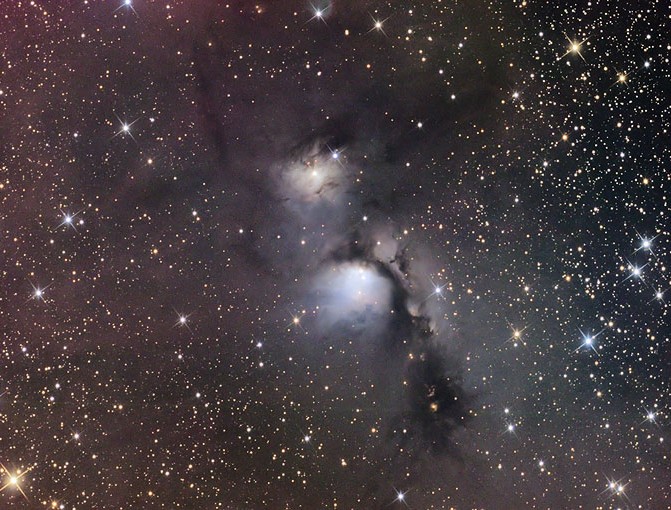Credit & Copyright: Stephan Messner
Explanation:
Interstellar
dust clouds and bright nebulae abound in the fertile
constellation of Orion.
One of the
brightest,
M78, is just below center in
this sharp widefield view,
covering an area north of
Orion's belt.
At a distance of about 1,500 light-years, the
bluish nebula itself
is about 5 light-years across.
Its blue tint is due to dust
preferentially
reflecting the blue light
of hot, young stars in the region.
Dark dust lanes and other nebulae can easily be traced
through this gorgeous skyscape that
also
includes the remarkable
McNeil's Nebula -- a newly
recognized nebula
associated with
the formation of a sun-like star.
1999 2000 2001 2002 2003 2004 2005 2006 2007 2008 2009 2010 2011 2012 2013 2014 2015 2016 2017 2018 2019 2020 2021 2022 2023 2024 2025 |
Январь Февраль Март Апрель Май Июнь Июль Август Сентябрь Октябрь Ноябрь Декабрь |
NASA Web Site Statements, Warnings, and Disclaimers
NASA Official: Jay Norris. Specific rights apply.
A service of: LHEA at NASA / GSFC
& Michigan Tech. U.
|
Публикации с ключевыми словами:
nebula - reflection nebula - отражательные туманности - Пылевая туманность
Публикации со словами: nebula - reflection nebula - отражательные туманности - Пылевая туманность | |
См. также:
Все публикации на ту же тему >> | |
